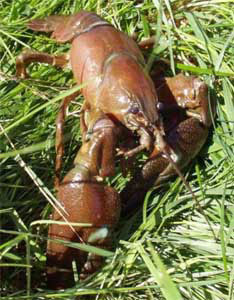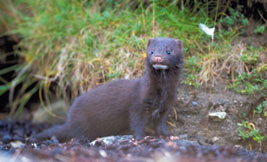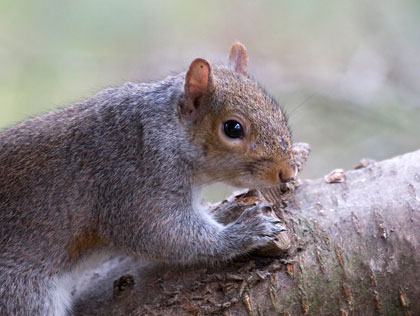Non-native species
Giant hogweed, Himalayan Balsam, Japanese Knotweed.
 All of these non-native plant species were introduced to Britain as ornamental plants in the 19th century. Plants that have spread from gardens have now colonised many areas of wasteland and riverbanks. They all grow rapidly and spread easily, forming dense colonies that prevent native plants and grasses from growing. When they die back in autumn, they leave large bare areas that can lead to the riverbank being worn away by the water.
All of these non-native plant species were introduced to Britain as ornamental plants in the 19th century. Plants that have spread from gardens have now colonised many areas of wasteland and riverbanks. They all grow rapidly and spread easily, forming dense colonies that prevent native plants and grasses from growing. When they die back in autumn, they leave large bare areas that can lead to the riverbank being worn away by the water.
 Giant hogweed is also a danger to health as its poisonous sap causes painful blistering and severe skin irritation. All three invasive plant species are in the area, although giant hogweed, which can grow up to 5 metres high has become the most common in the middle and lower areas of the catchment as plants spread from seeds washed downstream. At the moment, there is no particular cooperation taking place in controlling the growth and spread of these invasive plant species in the catchment.
Giant hogweed is also a danger to health as its poisonous sap causes painful blistering and severe skin irritation. All three invasive plant species are in the area, although giant hogweed, which can grow up to 5 metres high has become the most common in the middle and lower areas of the catchment as plants spread from seeds washed downstream. At the moment, there is no particular cooperation taking place in controlling the growth and spread of these invasive plant species in the catchment.
Signal crayfish
 Signal crayfish, a North American species, were introduced in England in the mid-1970s and have now found their way into some Scottish river systems. Once introduced, they can take over a river system very quickly due to their rapid reproduction cycle and their ability to travel over land between river systems. Signal crayfish eat almost anything from vegetation to dead animals and small fish and fish eggs. They also hide in the same crevices under rocks which are used as shelter by young fish in winter and during sudden flooding.
Signal crayfish, a North American species, were introduced in England in the mid-1970s and have now found their way into some Scottish river systems. Once introduced, they can take over a river system very quickly due to their rapid reproduction cycle and their ability to travel over land between river systems. Signal crayfish eat almost anything from vegetation to dead animals and small fish and fish eggs. They also hide in the same crevices under rocks which are used as shelter by young fish in winter and during sudden flooding.
Until recently the nearest known incidence of signal crayfish to the river South Esk was in ponds next to the river, North Esk, near Edzell, where they were thought to be first introduced illegally in 1998. However, in August 2008, signal crayfish were reported from the Pow Burn, which joins the river South Esk just upstream of Montrose Basin. Once in a river, the crayfish are very difficult to get rid of due to the problems associated with preventing the poisons used to kill them from contaminating the river and killing off other species.
Rainbow trout
From time to time people have caught rainbow trout in the South Esk. Rainbow trout have been introduced into a number of ponds as well as being stocked within the two fish farms within the area. These ponds, together with trout farms can lead to rainbow trout getting out. They then start to breed in the area, threatening native fish.
Mink
 Mink were first brought to Britain in 1929 from North America and were farmed for their fur. However, since 1956, they have been confirmed as having escaped or been released into the wild, and are now widespread across Britain. Mink hunt water voles, other small mammals and birds, and fish. Some individuals and the Cairngorms Water Vole Conservation Project carry out some mink control.
Mink were first brought to Britain in 1929 from North America and were farmed for their fur. However, since 1956, they have been confirmed as having escaped or been released into the wild, and are now widespread across Britain. Mink hunt water voles, other small mammals and birds, and fish. Some individuals and the Cairngorms Water Vole Conservation Project carry out some mink control.
The main issues raised during the consultation to do with habitats and species.
- The riparian woodlands and wet grasslands have now become fragmented
- The number of water voles, salmon, sea trout, and freshwater pearl mussels have reduced..
- Illegal freshwater pearl mussel fishing has been carried out.
- There is poor water quality (nutrients and sediments) possibly affecting freshwater pearl mussels and salmon.
- Threats from invasive non-native species.
- Lack of information relating to the status of other fish species in the area.

© Darin Smith


